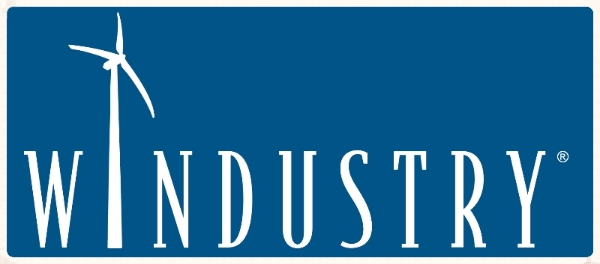In the U.S., the greatest source of human-caused greenhouse gas emissions is the power sector, at about 38%. The largest source of power is coal, which, even though it produces less than 40% of the power, produces over 70% of the power sector’s greenhouse gas emissions. (20% of the greenhouse gas emissions are from natural gas-fired power plants.) Although wind turbines have become familiar in much of the U.S., wind power still (2013) only accounts for about 4% of the power sector.
The potential for wind energy is immense, and experts suggest wind power can easily supply more than 20% of U.S. and world electricity. The advantages and disadvantages of wind energy are detailed here to help you decide what the future of wind should be in the United States.
Economic Advantages
· Revitalizes Rural Economies: Wind energy can diversify the economies of rural communities, adding to the tax base and providing new types of income. Wind turbines can add a new source of property taxes in rural areas that otherwise have a hard time attracting new industry. Each 100 MW of wind development in southwest Minnesota has generated about $1 million per year in property tax revenue and about $250,000 per year in direct lease payments to landowners.
· Fewer subsidies: All energy systems are subsidized, and wind is no exception. However, wind receives considerably less than other forms of energy. According to Renewable Energy World magazine, conventional energy recieves US$300 billion in subsidies per year, while renewable energy has received less than US$20 billion of tax-payers’ money in the last 30 years. A study published by researchers at Harvard in 2011 found that the full life cycle cost of coal power is between about 9.5 and 27 cents per kilowatt-hour, most of which is paid by taxpayers in the form of increased health-related costs. These “indirect” subsidies amount to between $175 billion and over $500 billion/year. (Numbers are in 2008 dollars. For more see here.)
· Free Fuel: Unlike other forms of electrical generation where fuel is shipped to a processing plant, wind energy generates electricity at the source of fuel, which is free. Wind is a native fuel that does not need to be mined or transported, taking two expensive costs out of long-term energy expenses.
· Price Stability: The price of electricity from fossil fuels and nuclear power can fluctuate greatly due to highly variable mining and transportation costs. Wind can help buffer these costs because the price of fuel is fixed and free.
· Promotes Cost-Effective Energy Production: The cost of wind-generated electricity has fallen from nearly 40¢ per kWh in the early 1980s to 2.5-5¢ per kWh today depending on wind speed and project size.
· Creates Jobs: Wind energy projects create new short and long term jobs. Related employment ranges from meteorologists and surveyors to structural engineers, assembly workers, lawyers, bankers, and technicians. Wind energy creates 30% more jobs than a coal plant and 66% more than a nuclear power plant per unit of energy generated.
· National Security/Energy Independence: Wind turbines diversify our energy portfolio and reduce our dependence on foreign fossil fuel. Wind energy is homegrown electricity, and can help control spikes in fossil fuel cost. Distributed generation facilities, like many community wind projects, provide a safeguard against potential terrorist threats to power plants.
· Supports Agriculture: It is not often a new crop emerges from thin air. Wind turbines can be installed amid cropland without interfering with people, livestock, or production.
· Local Ownership: A significant contribution to the worldwide energy mix can be made by small clusters of turbines or even single turbines, operated by local landowners and small businesses. Developing local sources of electricity means we import less fuel from other states, regions, and nations. It also means our energy dollars are plowed back into the local economy.
Environmental Advantages
· Conserves and Keeps Water Clean: Turbines produce no particulate emissions that contribute to mercury contamination in our lakes and streams. Wind energy also conserves water resources. For example, producing the same amount of electricity can take about 600 times more water with nuclear power than wind, and about 500 times more water with coal than wind.
· Clean Air: Other sources of electricity produce harmful particulate emissions which contribute to global climate change and acid rain. Wind energy is pollution free.
· Negligible Greenhouse Gases: The sources of most of our power, coal and natural gas, produce large quantities of greenhouse gases. (Coal much more than natural gas.) Wind power produces none, other than in the manufacture, installation and maintenance of the turbines. On average those greenhouse gases are offset by the clean power the turbines produce within 9 months of operation.
· Mining & Transportation: Harvesting the wind preserves our resources because there no need for destructive resource mining or fuel transportation to a processing facility.
· Land Preservation: Wind farms are spaced over a large geographic area, but their actual “footprint” covers only a small portion of the land resulting in a minimum impact on crop production or livestock grazing.
Disadvantages
· A Variable Resource: Turbines produce electricity only when the wind blows. This variability is monitored and compensated in the same way utilities monitor demand changes each day, so there are not any actual changes in power supply for the end users.
· Aesthetics: People have widely varied reactions to seeing wind turbines on the landscape. Some people see graceful symbols of economic development and environmental progress or sleek icons of modern technology. Others might see industrial encroachment in natural and rural landscapes. There are many ways to minimize the visual impact of wind turbines, including painting them a neutral color, arraying them in a visually pleasing manner, and designing each turbine uniformly.
· Shadow Flicker: Shadow flicker occurs when the blades of the rotor cast a shadow as they turn. Research has shown the worst-case conditions would affect, by way of light alteration, neighboring residents a total of 100 minutes per year, and only 20 minutes per year under normal circumstances. Designers of wind farms avoid placing turbines in locations where shadow flicker would be a problem any significant amount of time.
· Sound: Wind turbines are not silent. The sounds they produce are typically foreign to the rural settings where wind turbines are most often used, but as turbine technology has improved over the years, the amount of sound has fallen considerably. The sounds of wind turbines do not interfere with normal activities, such as quietly talking to one’s neighbor.
· Biological Resource Impacts: As with any construction project or large structure, wind energy can impact plants and animals, depending on the sensitivity of the area. Loss of wildlife habitat and natural vegetation are the primary wildlife concerns associated with wind energy. With modern turbines, mounted on tubular towers and whose blades spin only about 15 times per minute, bird collisions are now rare. Extensive environmental impact analysis is an integral part of project development to mitigate impacts as much as possible. The Audubon Society and Sierra Club both support wind energy development, because the environmental advantages far outweigh the disadvantages.
· Construction: Wind systems can involve the transportation of large and heavy equipment. This can cause a large temporarily disturbed area near the turbines. Erosion is another potential environmental problem that can stem from construction projects. The single most reliable technique for limiting erosion is to avoid grading roads and to perform site reclamation post construction.
· Radar: Radar interference by wind turbines is rare and easily avoided through technological improvements and proper siting of turbines that are close to sensitive areas. A number of U.S. government installations have both wind turbines and functional radar, and the British military has a track record of successfully addressing these challenges.
In Summary
For the sake of the planet, national security, rural economic revitalization, and resource preservation we must promote a renewable energy economy. Wind power can be a cornerstone of that sustainable energy future because it is affordable, provides jobs, substantial and distributed revenue, and treads lightly on our environment without causing pollution, generating hazardous wastes, or depleting natural resources. Embracing wind energy today will lay the foundation for a healthy tomorrow.

